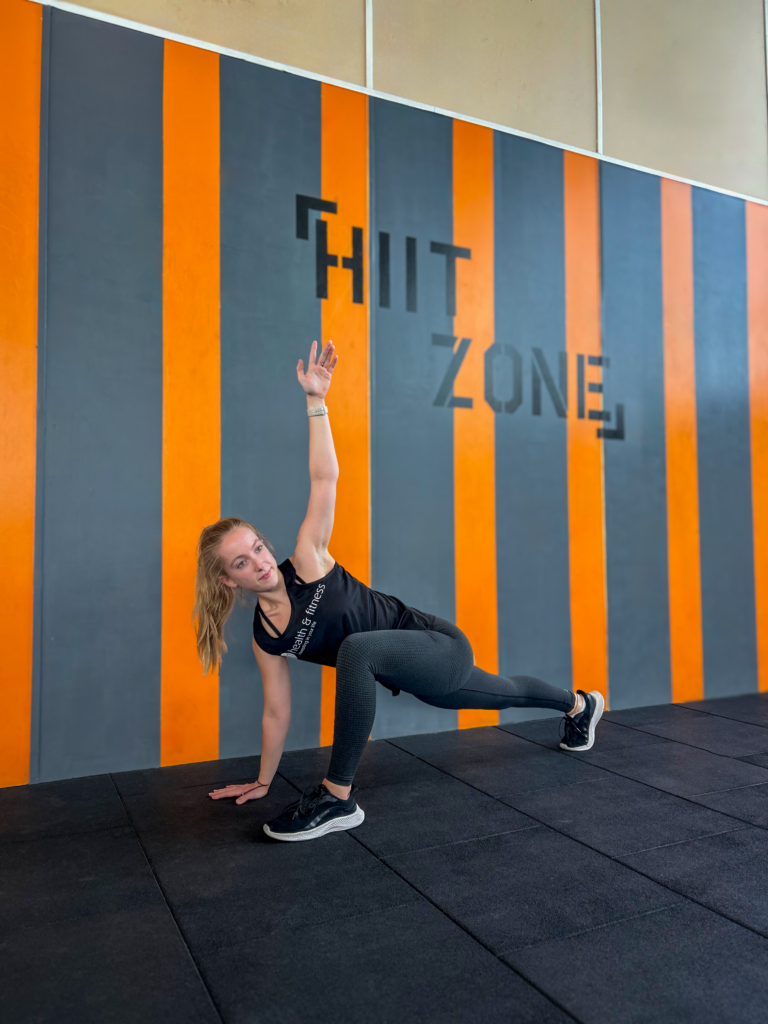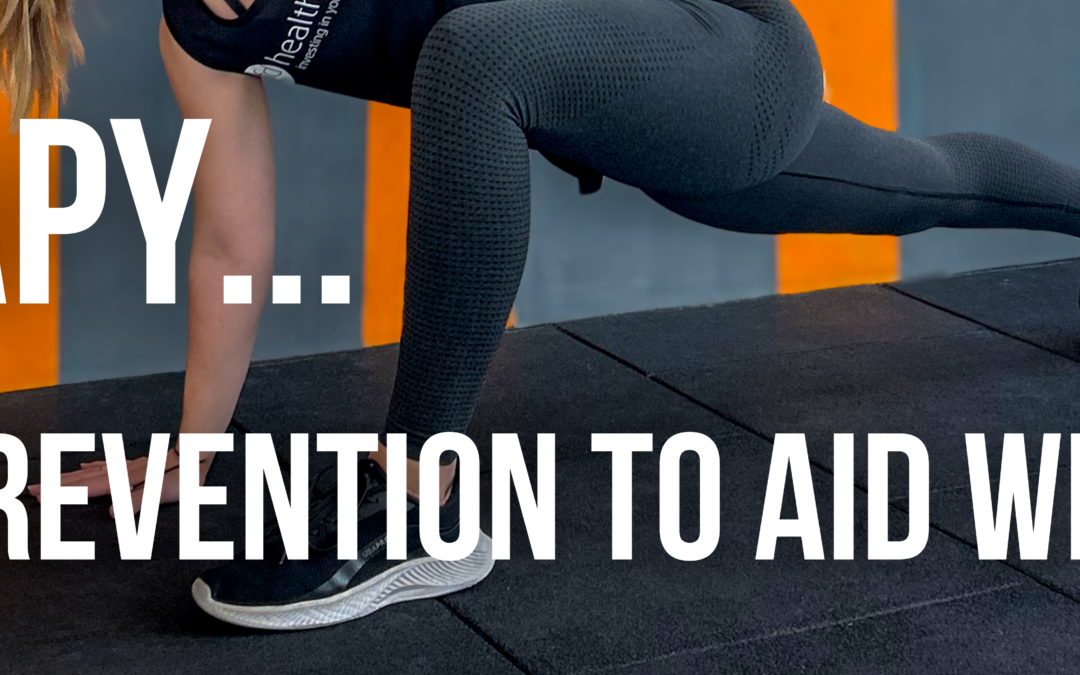Hands up if you’ve ever had an ache, pain or niggle? Almost everyone, right? Hands up if you’ve ever tried to continue training through an injury because “it’ll go away by itself”? Again, too many hands up. Hands up if injury prevention methods are something that coincide with your training? Now this is where the hands drop.
Exercise, although super beneficial for our physical and mental health, places strain on the body, which can lead to wear and tear injuries if we don’t put the correct methods in place to look after ourselves. Below, we highlight just a few of the factors you should consider to ensure you can get the most out of your body while training:
- Rest days are just as important as training days:
This may sound counterintuitive when you’re actively seeking results, but it is during this time of recovery that hypertrophy occurs. Exercise places stress on tissues causing musculoskeletal trauma in the form of micro-tears in the muscles. Although they cause soreness the next day, these aren’t of concern and usually heal within 24-48hrs. When training and recovery days are well-balanced, these muscle tears will, overtime, lead to an accumulation of muscle mass leading to the results you want. But, it’s important to remember muscle is built in the repair phase – if you don’t allow time for rest, you won’t allow progression.
The number of rest days you need depends on factors such as fitness levels, fitness goals, and age. If you’re unsure how many rest days you should be implementing, speak to one of our fitness instructors who will happily advise.
- You don’t need to be injured to receive sports therapy:
As athletes, regular gym goers, fitness fanatics and so on, we are well accustomed to a world of aches and pains. I’m sure many of us have had an injury or two and sought (hopefully) treatment from an osteopath, chiropractor, sports therapist etc. But, sports therapy isn’t something we need an injury for to receive. Research shows regular sports massage reduces our risk of injury. Seeing a professional who can highlight our muscle imbalances, realign, check posture and treat muscle tightness, just to name a few, offers benefit in the long run as our bodies remain in a state of optimal performance. Training with muscle imbalances will only lead to compensation and therefore incorrect technique, causing injury. Here at TFD we offer posture checks to assess symmetry/ asymmetry, and imbalances, as well as movement patterns that mirror day to day activities. Head to reception to enquire.
- Top and tail with a warm-up and cool-down:
It isn’t uncommon to skip a warm-up or cool down especially when you’re running behind schedule, but it is under these circumstances that the muscles are put under strain, due to being stretched when cold, that leads to injuries like muscle tears. It is important to ensure a warm-up occurs and focuses on preparing the relevant muscles for the anticipated movement. The focus of the warmup should be preparation for upcoming exercise in order to prime the relevant muscles for the required power and range of movement (ROM). Training legs and glutes…add a few body weight squats and lunges, followed by hip opening exercises to your warm up. Training chest and triceps? Grab a dowel and chuck in a few ‘around the worlds’. Any of our fitness instructors are more than happy to recommend warm-up mobility exercises and stretches if you’re unsure how to target the right muscles. It is just as important to cool down in order to remove lactic acid and waste products from the body, reducing your chances of DOMS. These don’t have to take too much time out of your training session, but evidence shows improved performance and efficiency in training following the inclusion of warm-up.

- Technique is key:
A primary goal of injury prevention is to become aware of your habits. Poor technique is a factor that plays a pivotal role in injury. Although there are many more factors to consider, ensuring correct alignment and technique will reduce the risk of strains and chronic injury such as ligament damage.
As Tabby likes to say…“Slow and steady wins the race.” Technique is far more important than completing as many reps as possible, or likewise finishing a workout. If you’re rushed for time, a shorter session with correct technique will always benefit you more than completing every exercise but sacrificing posture and alignment.
There is a difficulty surrounding re-patterning movement once it becomes ingrained as ‘stage III automatic movement’, following an extended length of time. Therefore, it’s important the correct technical aspects are implemented into training to ensure safe performance of technique before habits arise and become difficult to undo.
Here at TFD you are entitled to a training programme of which one of our instructors will build for you. Upon doing so, you will be walked through your plan and demonstrations will be carried out where tips regarding technique will be shared. These tips are important for ensuring exercises don’t cause strain and injury. Likewise, grab an instructor if you’re training and would like some guidance in how to perform an exercise correctly, or head to our blog where you’ll find a section on ‘Technique.’
- “Pain is your friend” – listen to your bodies:
“No pain, no gain”. Fortunately, this isn’t true. Training and exercise shouldn’t be painful. Yes, on all accounts work hard and push yourself, but if anything causes pain, something is wrong.
Pain is often divided into ‘positive’ – performance pain – and ‘negative’ – injury pain. While performance pain typically presents as DOMS (Delayed Onset Muscle Soreness) – dull aches and tightness – injury pain is acute and sharp and should be taken seriously. Pain is your bodies way of telling you something isn’t right – listen to it. More often than not, it’s something that can be fixed with rest, but it’s always important to get things checked over to reduce the chances of anything progressing into chronic injuries.
- Food is fuel:
Nutrition must stand as one of the most important injury preventatives. Due to the demands of exercise on the body, high quality nutrition should be adapted to the individual needs of each person to ensure they are getting their daily nutritional intake.
Protein is vital for the growth and repair of muscle tissue. Most adults need around 0.75g of protein per kilo of body weight. On average, women should aim for 45g of protein while men should aim for 55g. Note this is a guideline only. The presence of injury, activity levels and so on, will affect how much protein you should be eating.
Carbohydrates provide energy during exercise and should form 45-65% of your daily caloric intake. Aim to eat a carb based snack within 60mins of finishing a gym session to replenish the body’s glycogen stores.
Both Calcium and Vitamin D are vital for bone health. Strong bones reduce your chances of stress related injuries.
Your body is made up of 70% water which is vital for the overall function of the body, but in regards to injury prevention, water helps create synovial fluid – key for the protection and lubrication of joints. This is especially important for those of us exercising and training regularly. Aim to drink 2 litres of water a day.
Some foods such as bananas and spinach also contain plant compounds known to reduce inflammation, which are of benefit to the body following exercise and during periods of recovery.
Provide your body with the fuel it needs, and it will deliver. Speak to Elaine, our nutritional advisor, should you need any guidance on eating a balanced diet/what your diet should look like based on your goals.
- It’s all about balance:
Overuse injuries are some of the most common injuries amongst gym-goers. Everyone has a favourite training day. I, for one, struggle to drag my butt to the gym on chest day, but by working all areas of the body, not only are you staying in tip top shape all round, but you’re reducing your chances of overuse injuries. Vary your workout – don’t overuse any one set of muscles, as inviting as this may sound. Repetitive strain injuries will occur and the main treatment for overuse injuries is…..you guessed it….rest.
Ensure you balance your training days. Train 2 days a week? Split this into upper and lower body. 4 days a week? Chest, legs, core, back with rest days slotted in between.
Reach out to the team if you’d like assistance with a programme.
It’s rewarding when we get the results we’ve been training for. It can be frustrating when these gains slow down, or we begin to regress, but often, this is our bodies way of telling us it needs rest. Rest is vital for recovery and repair, so offer this to your body before it’s injured and demands a complete stop to training. Provide rest, alongside correct technique, a balanced diet, good hydration and warming up and you will find training remains consistent, injuries stay at bay and your body performs to its optimum.
If at any point you experience an injury, head to or phone reception to enquire about a sports therapy or massage from our therapy team; Josh, Jo, Calum and Alex.
Likewise, any one of our instructors will always be more than happy to advise on correct technique, mobility exercises, a training programme, exercise alternatives and so on, while Elaine is contactable for nutritional advice.

